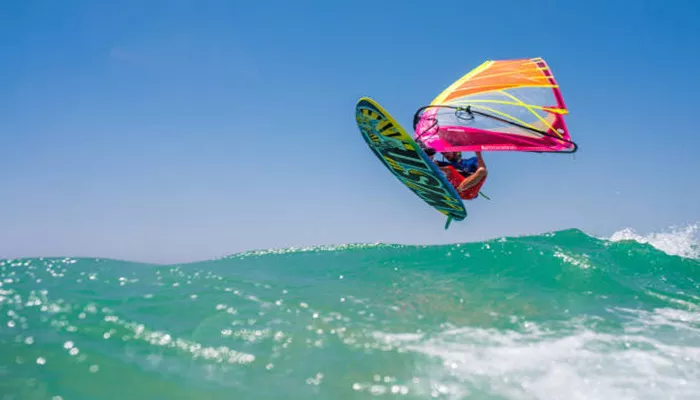Jumping in windsurfing is one of the most thrilling maneuvers a rider can perform. It combines speed, timing, and precision. Learning to jump properly not only enhances the fun but also improves overall board control. For beginners and intermediates, understanding the right techniques is crucial for safe and efficient jumps. This guide provides a comprehensive, step-by-step breakdown on how to jump in windsurfing, along with tips to refine your skills and take your sessions to the next level. Whether you are starting out or looking to progress, mastering jumping opens a new dimension of excitement on the water.
Understanding the Basics of Windsurfing Jumps
Before attempting a jump, ensure you have mastered basic windsurfing skills. Balance, stance, and steering must feel natural. Without strong fundamentals, jumping can be dangerous. A jump involves coordinating board lift with sail control.
The wind provides lift, while the wave or chop acts as the launch ramp.
Essential Equipment for Jumping
Choosing the right equipment is critical. Freestyle and wave boards are ideal for jumping. Smaller boards respond quicker.
Use a relatively small, maneuverable sail to maintain better control in gusts and during airborne phases. Tighten footstraps snugly to secure your feet during takeoff and landing. A strong, flexible mast helps absorb shocks. Always wear proper safety gear, including a helmet and impact vest.
Reading the Water and Wind
Successful jumping depends on reading the water surface. Look for small ramps—chop or swell lines perpendicular to your sailing direction. Smooth chop produces low jumps; steeper faces allow higher lifts. The wind direction and strength significantly influence the approach. Side-shore or side-onshore winds provide ideal lift angles. Consistent wind helps maintain stability mid-air.
Setting Up for the Jump
Approach the ramp with good speed. Maintain a slightly downwind course. Keep your body compact and low. Your back foot should apply pressure on the fin while your front foot maintains steady pressure on the board’s rail. Keep your arms slightly bent and relaxed. Lock in your harness for steady pull but stay flexible for micro-adjustments.
Initiating the Jump
As you reach the ramp’s base, unweight the board. Gently extend your legs while pulling up with the sail. Think of standing tall to initiate lift-off. Push slightly down through the back foot to help pop the board upward. Simultaneously, sheet in the sail to capture wind energy and drive yourself upwards. Keep your eyes focused ahead—not down—to maintain balance and anticipate landing.
Mid-Air Control
Once airborne, stability is key. Keep the sail sheeted in. Stay centered over the board. Small adjustments with the sail and foot pressure help maintain equilibrium. If the nose rises too high, extend your front leg and push forward slightly with the rig. If the nose dips, pull back slightly on the mast hand and shift weight rearward. Maintain a relaxed but engaged posture to absorb shocks from gusts or unexpected shifts in board orientation.
Preparing for Landing
Spot your landing early. Lower the board gently towards the water by extending your legs slightly. Keep the sail sheeted in but soften your grip to prepare for impact absorption. Aim to land tail-first, then smoothly level the board. Absorb the landing by bending your knees. Stay low to quickly regain balance and continue riding.
Common Mistakes and How to Avoid Them
Over-sheeting the sail: This causes loss of control mid-air. Instead, maintain moderate tension.
Hitting ramps at wrong angles: Approach ramps perpendicular for best lift.
Incorrect stance: Too stiff or too upright positions result in poor jumps. Stay compact and ready to adjust.
Poor landing posture: Stiff legs can cause crashes. Always bend knees upon landing.
Progressing to Higher Jumps
Once basic jumps feel easy, work on generating more height. Time your take-off with bigger ramps. Pump the sail slightly before launch to add lift. Use body extension more aggressively. Commit fully to each jump. Always practice in safe conditions and advance gradually.
Practicing Jump Variations
After mastering basic jumps, try small tweaks:
Tail Grab: Reach down and grab the tail of the board mid-air.
Nose Grab: Grab the nose while keeping the board level.
Tabletop: Tilt the board sideways by twisting your hips and pulling the rig.
Forward Loop (advanced): Rotate forward while airborne—a move for experts.
Weather And Safety Considerations
Always assess conditions before jumping. Avoid offshore winds. Watch for sudden gusts or lulls. Know your limits. Practice near shorelines or in controlled environments before venturing into rougher seas. Inform someone on land when you plan long sessions. Safety always comes first.
Training Drills for Better Jumping
Incorporate specific drills to boost skill:
Flat Water Pop: Practice popping without ramps.
Chop Hops: Jump off small chop regularly to build timing.
Controlled Drops: Practice small jumps, focusing purely on smooth landings.
Sail Pumps: Improve your ability to generate lift by controlled sail pumping.
Using A Windsurfing Guide for Jump Mastery
For deeper understanding and structured progression, use a comprehensive Windsurfing Guide. These guides offer detailed insights, training regimes, and tips from professional riders. They help you track progress, avoid plateaus, and move toward advanced aerial tricks safely and systematically.
Conclusion
Jumping in windsurfing is a rewarding challenge. It transforms simple rides into dynamic, exhilarating sessions. By mastering basic techniques, building strength and agility, reading conditions carefully, and practicing consistently, any windsurfer can achieve beautiful, controlled jumps. Follow structured steps, stay patient, and prioritize safety. Embrace the thrill of defying gravity—one jump at a time.

